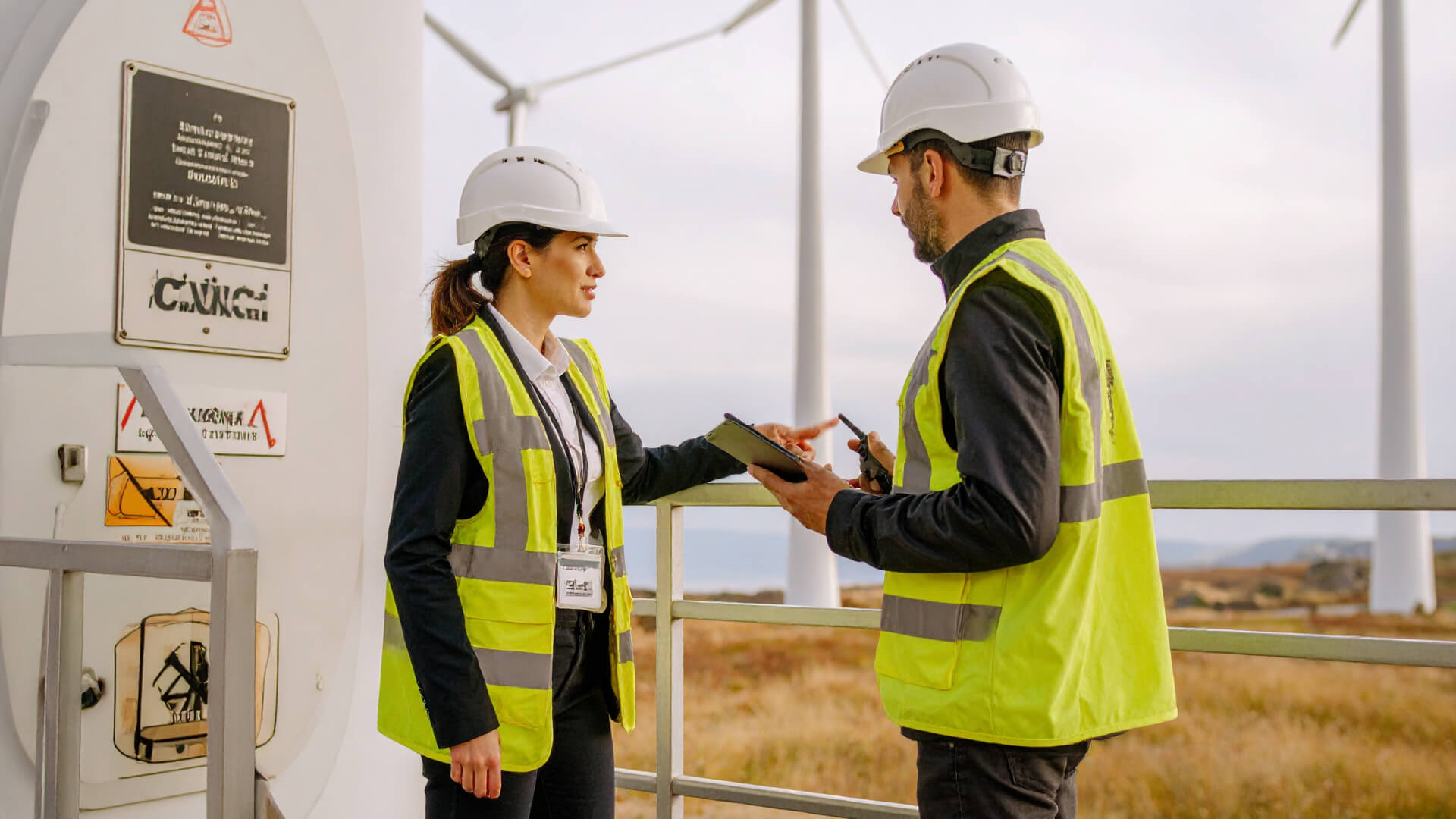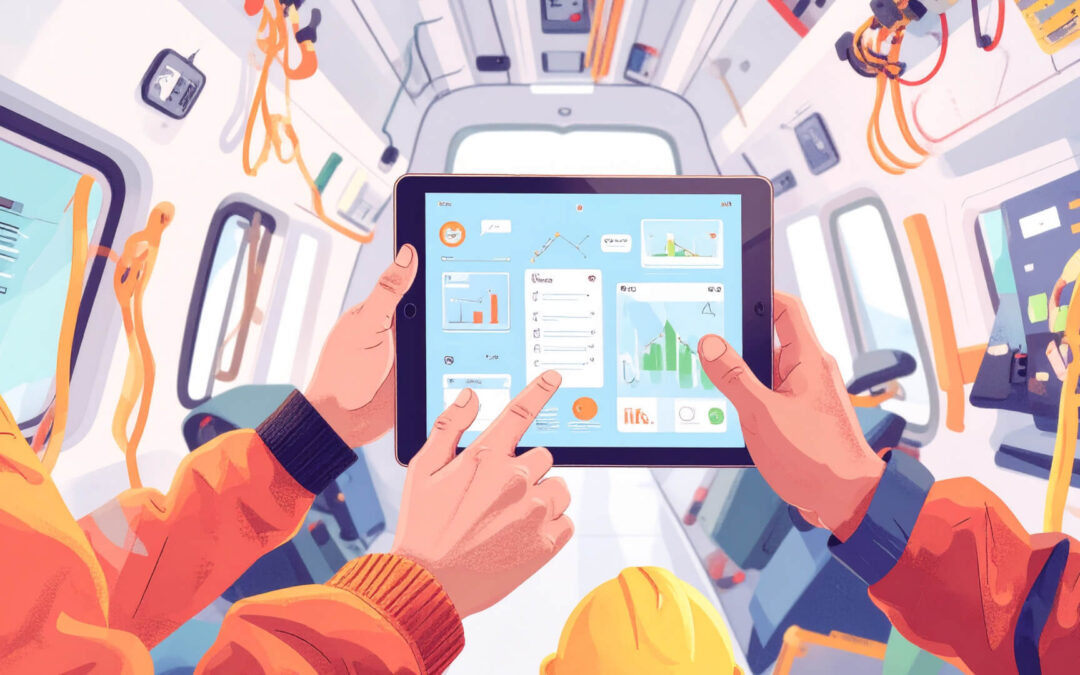New technicians entering the wind energy sector often face uncertainty in the field, which can lead to hesitation or errors.
GML’s innovative strategy empowers them through practical training, structured troubleshooting, and collaborative learning—helping them develop confidence and competence from day one.
Key Strategy: Role-Specific Training Modules
Customized Learning:
Training is now tailored to the real-world responsibilities and challenges of wind technicians, reflecting the latest industry standards and the increasing complexity of wind turbine technology.
For example, Safety Technology USA’s 2025 curriculum introduces new, specialized courses such as “Competent Person Fall Protection,” “Climber Training,” and “BOP Substation/PMT Switching,” ensuring technicians gain expertise in both safety and technical operations relevant to their specific roles.
These programs are designed to align with international protocols like those from the Global Wind Organisation (GWO), whose certified workforce has nearly doubled from 100,000 in 2020 to over 190,000 in 2023.
Self-Reliance:
Role-specific modules emphasize practical skills and decision-making through hands-on exercises and scenario-based simulations.
This approach is proven to build confidence and competence—technicians who complete GWO Basic Technical Training (BTT), for example, are assessed through direct observation, practical tasks, and written tests, preparing them to troubleshoot and maintain turbine systems independently.
The rapid growth in certified wind technicians—projected by GWO to exceed 500,000 in 2024—demonstrates the effectiveness of these targeted training strategies in preparing a workforce that is ready for the field from day one.
“3 Steps to Fix Any Fault” Framework
Step 1: Identify the Problem
Technicians begin by using advanced diagnostic tools and keen observation to accurately pinpoint the underlying issue within the wind turbine system.
Step 2: Analyze Possible Causes
Next, they apply logical reasoning and leverage their technical training to methodically narrow down the potential root causes of the identified problem.
Step 3: Implement and Verify the Solution
Finally, technicians execute the necessary repair or adjustment, then rigorously verify that the system is operating correctly and safely before concluding the intervention.
This structured approach ensures efficient troubleshooting and builds confidence by providing a clear, repeatable process for resolving technical faults.
Gamified Lessons and Peer Collaboration
Applied Learning Through Gamification
Gamification transforms technical training into an interactive, engaging experience by simulating real-life scenarios and challenges.
Studies show that gamified learning can increase knowledge retention by up to 40% and boost engagement by over 60% compared to traditional methods, as highlighted by research from eLearning Industry.
This approach not only makes learning more enjoyable but also prepares technicians for the dynamic, problem-solving demands of wind turbine maintenance.
Peer-Based Learning
Technicians work in teams to tackle complex problems, share practical experiences, and learn collectively from both successes and setbacks.
According to a 2022 report by McKinsey, peer-based learning can accelerate skill development by up to 30%, as it encourages active participation and the exchange of diverse perspectives.
Community Support
By fostering a collaborative environment, organizations normalize the practice of asking questions and seeking assistance.
This culture of support not only reduces the fear of making mistakes but also drives continuous improvement. Data from the American Society for Training and Development (ASTD) reveals that companies with strong peer learning cultures see employee confidence and performance rise by an average of 25%.
Why GML’s Approach Works
Role-specific training, a clear and repeatable “3 Steps to Fix Any Fault” troubleshooting framework, and a supportive, interactive learning environment that emphasizes gamification and peer collaboration.
This holistic approach accelerates the development of technical confidence and competence in new wind technicians, enabling them to perform at a high level far sooner than traditional, experience-based learning would allow.
Recent industry studies, such as those from McKinsey and GWO, show that structured, hands-on training combined with peer learning can reduce the time to proficiency by up to 50% and significantly increase job satisfaction and retention rates.
By fostering a culture of continuous improvement and real-world problem-solving, GML ensures that new technicians are not only ready for the challenges of the field but also empowered to excel—right from the start.
In summary, GML’s approach ensures new wind technicians are ready for the field by focusing on practical, relevant training, a reliable troubleshooting method, and the power of learning together. This builds technical confidence early and sets them up for long-term success.




